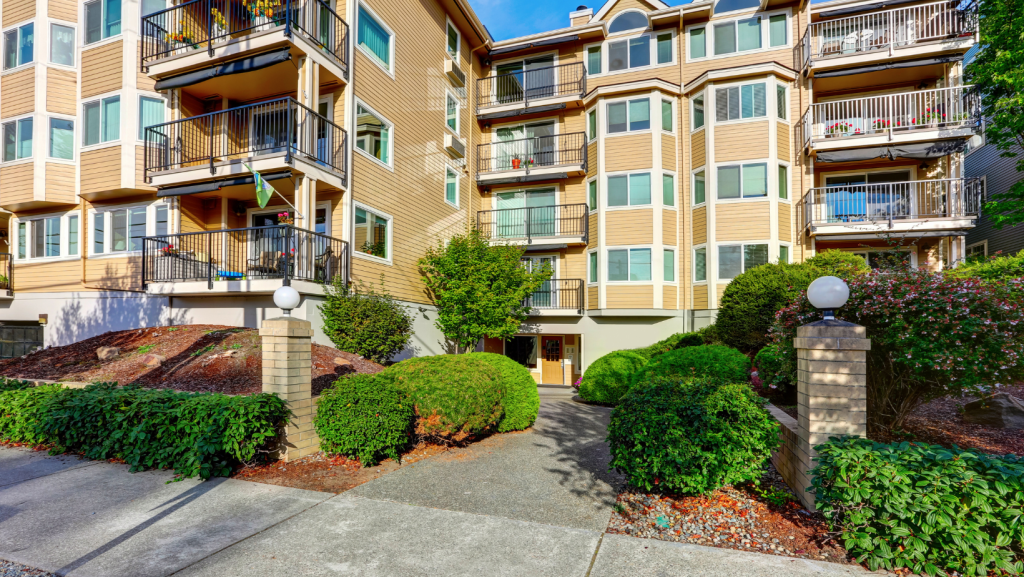Investing in real estate has long been viewed as a stable investment and an exciting way to diversify an investment portfolio. For most individual investors, focusing on single-family homes has long been the focus, and many multifamily investment opportunities were simply out of reach due to available funding.
Multifamily investing is now closer to the individual investor than ever before. Real estate investment trusts (REITs) that specialize in multifamily housing offer individuals the opportunity to invest in institutional-quality real estate without the hassles of owning and managing the physical property.
What is the definition of “multifamily”?
Multifamily real estate contains two or more units within the same building, and the units don’t have to be the same size – the bottom line is a multifamily property can accommodate multiple occupants as individuals or family units. Generally, when a property has four or fewer units, it’s considered residential multifamily, and more than four units are considered commercial or institutional multifamily.
Multifamily housing can be targeted at different markets, both demographically and geographically.
Why a multifamily REIT
A REIT simplifies real estate investing. Investors get the benefits of property ownership without taking on the responsibilities of being a landlord or supervising the management company operations.
REITs offer investors diversification, risk mitigation and can provide a source of passive income for investors.
Like mutual funds, REITs pool funds from individual investors and use the pooled resources to buy, improve, manage, and sell multifamily properties.
To qualify as a REIT, the company must:
- Earn at least 75% of its income from rental income or other real estate activities
- Have 75% of assets in real estate
- Have at least 100 shareholders
- Be no more than 50% owned by five or fewer individuals
- Pay at least 90% of its net income as dividends
Different kinds of REIT specialization
A real estate investment trust (REIT) can invest in a range of physical real estate such as office buildings, retail centers, multifamily housing, or the REIT can invest in mortgages and loans. The REIT may even invest in a combination of both physical properties and mortgages. Every REIT portfolio is unique.
Most REITs focus on a specific property type, but some hold multiple types of properties in their portfolios.
Additionally, investors enter and exit REIT investments in different ways. Each comes with its distinct risk profile, holding period, and investor qualifications.
- Public REITs – Traded on the open market, these REITs are highly liquid. Investors can enter and exit investments without holding restrictions (similar to stocks). Public REITs generally have higher risk profiles and reflect changes in the market.
- Private REITs – These REITs offer high returns but require long holding periods. They’re not publicly available and typically reserved for high-net-worth individuals and financial institutions.
- Public non-traded REITs (like Upside Avenue) – Offering potentially higher-quality investments for investors, these REITs have holding periods (shorter than their private counterparts), small minimum investments, and can provide more stability and lower risk than Public REITs. They also offer alternative funding options such as using an after-tax retirement account like an SDIRA or Roth IRA.
Multifamily investments are resilient
Multifamily real estate has shown itself to be a resilient asset. It provides stable cash flow and offers a diversified base of revenue, unlike commercial real estate, which can rely on a single tenant to maintain cash flow.
Beyond cash flow, multifamily investments show resilience and stable demand in additional ways:
High, continued rental demand from Millennials
Millennials are placing strong demand on rental properties, feeling as though they are priced out of the homeowning market, and their homeownership has lagged behind previous generations’ rates of homeownership.
Nationally, 12.3% of millennial renters say they plan to “always rent,” up from 10.7%.
Boomers are choosing to rent
According to a report from Forbes, the most significant changes in the renter profile came from the population aged 55+, which increased 28% between 2009 and 2015
Renters in this generation are looking to be closer to their children and grandchildren, downsizing from suburban homes, and are looking for service-based amenities multifamily housing offers.
Faster rent increases vs. commercial real estate
The typical residential lease agreement is about one year, whereas the standard commercial lease can range from 3-5 years. Shorter lease agreements mean rents can rise more frequently to adjust to market demands and reflect improvements and added amenities in multifamily housing.
When the economy or markets experience stress and small businesses fold, office buildings and other commercial real estate can feel the impact as tenants move in and out in big waves, but multifamily remains stable and can grow when other parts of the market contract.
Increase in demand for workforce housing
Upside Avenue specializes in multifamily workforce housing, which serves a very large demographic in the United States. Upside Avenue’s portfolio is centered primarily in Texas and supports one of the top 10 fastest growing labor markets in the United States.
Resilient against significant economic shifts
When tenants face economic challenges, they typically cut back on discretionary expenses before defaulting on their rent payments. The more units in a portfolio property, the more easily rent issues, and the impact from tenant turnover won’t significantly impact the bottom line of business operations.
Individual investors now have the opportunity to diversify their portfolios, avoid the volatility of the stock market, and invest in income-producing real estate.
One of the best strategies for growing personal wealth through investments is to focus on the end financial goal. Whether your investment goal is building wealth, retirement, or financial independence, a successful investment reaps real rewards over the long term, and an investment in a multifamily REIT is no exception.
About Upside Avenue
For decades, the ultra-wealthy and financial institutions have been putting their money to work in real estate—now with Upside Avenue, you can too. We provide access to a professionally managed, diversified portfolio of income-producing multifamily real estate for as little as $2,000. Learn more about the Upside Avenue Multifamily REIT with targeted returns of 10-15% IRR.


